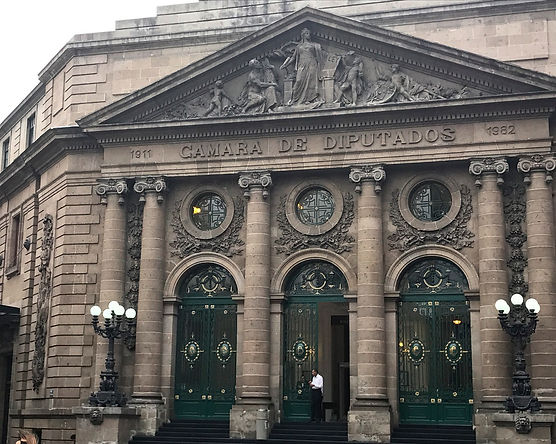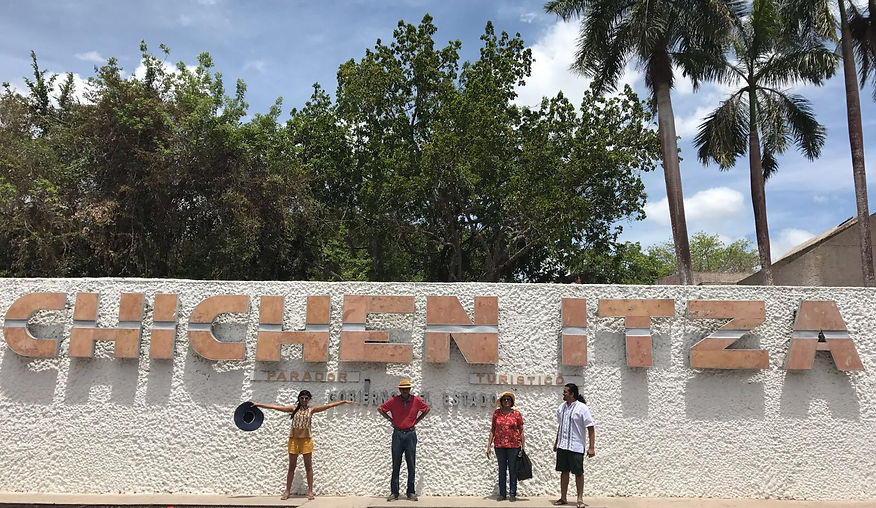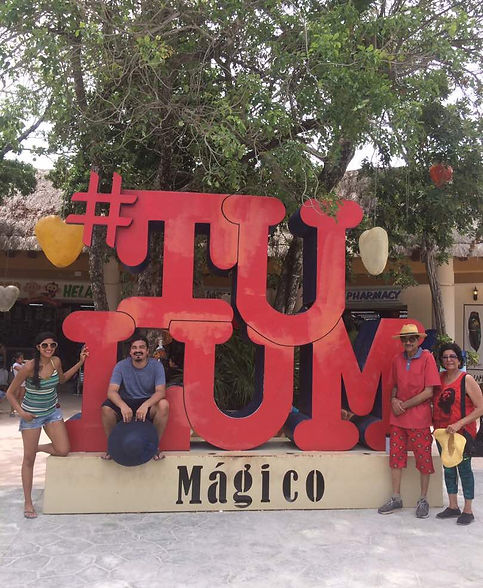Tequila Sunrise
"It's another tequila sunrise
Starin' slowly 'cross the sky said goodbye
He was just a hired hand
Workin' on the dreams he planned to try
The days go by,
Take another shot of courage
Wonder why the right words never come
You just get numb
It's another tequila sunrise, this old world
Still looks the same,
Another frame, mmm" Eagles




Mexico City

The plan was to spend Summer 2017 in Mexico, keeping Mexico City as the base whilst exploring the historical and coastal East Mexico. Four of us (Our folks, Kayhan and I) reached Mexico City excited to begin our journey. We booked an Airbnb in Centro Historico right in the midst of the old city, which was perfect to walk around central part of town. Several people gave us a heads up to be careful, as Mexico City is known to be notoriously unsafe. I do have to say that at no point of time through my travels did I ever feel unsafe. At night, as it was recommended we took ubers around Centro Historico instead of walking.

Mexico City is expansive and sprawls across 1485 square kilometers. Our first stop was the Museo Nacional de Antropolögia. Located on Paseo de la Reforma are a series of museums and one can easily spend the entire day here if not more, walking around the vicinity. On weekends, this area is closed off to cars, encouraging residents and tourists to explore the enclosure on a bike. Tracing back to the evolution of humankind, Museo Nacional de Antropologié depicts the history of humans from time before beginning. Evolving from sapiens to become hunters, gatherers, explorers and nomads, it depicts the pre-Columbian and pre-Hispanic way of life where indigenous people lived close to nature worshipping the natural elements of our planet. They worshipped totems that depicted the natural forces and lived as a strong community, with the women playing a central role in hunting and decision-making. With the arrival of the conquistadors, the goal became to convert indigenous people to Christianity. However, the people resisted and continued to place and worship their totems deep inside the earth under the cathedrals. The museum has some fascinating artifacts and is beautifully designed to walk you through the journey of humankind and the Pre-Hispanic era.

A recommended place to eat in Old Town is Casa de los Azulejos, the House of Tiles, designed to blow your mind away. It was built in the 18th century by the Count del Valle de Orizaba family and is now run as a Sanborns restaurant. Sitting next to the fountain with the overarching intricately designed ceiling, it was surely one of my favorite places to eat at in Mexico City. Mexico, of course, known for its tequila has some of the very best. Smooth and full, I enjoyed sipping on tequila followed by sangrita, a tomato-based drink that serves in cleansing the taste palate in between every sip. I was introduced to Mezcal, which is best accompanied by Sal de Gustano, salt from a worm. With 40% of alcohol, if had neat one never has a hangover ;)




$1000 per person
3 weeks
05/18/17-06/09/17
Getting There
Flight from New York to Mexico City
-
Volaris Airline
-
Duration: 4 hour 40 minutes
-
Cost: $390
Flight from Mexico City to Cancun
-
Volaris Airline
-
Duration: 1.5 hours
-
Cost: $150 (Booked last minute. If booked in advance, you can get tickets for around $70-80)
Stay
Mexico City
-
Airbnb: $20 per person / per day
-
Location: Centro Historico
-
Rating: 3.5 out of 5
-
Location: Roma Del Sur
-
Airbnb: $25 per person / per day
-
Rating: 3.5 out of 5
Cancun
-
Airbnb: $5 per person
-
Rating: 2.5 out of 5
Merida
-
Hotel: Ibis Merida $20 per person
-
Rating: 2.5 out of 5
Tulum
-
Hotel: Xscape Tulum $35 per person
-
Rating: 3.5 out of 5 (6 kms away from the beach)
Playa Del Carmen
-
Hotel: La Tortuga $60 per person
-
Rating: 3.5 out of 5 (Included a jacuzzi and private balcony)
Food Much
Mexico City
-
Casa de los Azulejos, House of Tiles: $15 per person
-
Barbecoa
-
El Capital: For Cocktails & Octopus
-
San Angel Inn: Everything is brilliant!
Merida
-
Panchos: Brilliant decor & ambience, delicious margaritas and fantastic tacos!
Local Travel
Rent-a-Car
-
Company: Alamo
-
Cost: $40 / per day
-
GPS: Buy a local sim card or use Google Maps offline. Renting a GPS is sometimes more expensive than the car
Highlights
Mexico City
-
Centro Historico
-
Museo National de Antropolögia
-
Templo Mayor
-
Museo de Palacia de Belles Artes
-
Museo Frida Kahlo
Around Mexico City
-
Teotihuacan
-
Tepoztlán
Neighborhoods for long-term stay
-
Roma del Sur
-
Condesa
East Mexico
Chichen Itza
-
Sound & Light Show
-
Guided Tour
Merida
-
Centro Historico
Coba
-
Climb the main pyramid to get a view of the expansive Mayan Jungle
Tulum
-
Tulum Ruins
-
Myriad Cenotes
-
Cenotes Azul, an open cenote for swimming

Museo de Palacia de Belles Artes is a historical and cultural landmark in Centro Historico, an architectural delight you cannot miss! We attended a cultural performance at Palacia de Belles Artes that showcased an array of Mexican music and dance spanning back to the pre-hispanic, taking us through the later journey of women revolutionaries that fought for freedom. It was our crash course introduction to Mexican costumes and different characteristics such as the lasso that weave into Mexican culture.

An hour to the south of Mexico City is Tepoztlán, known as a magical town! It’s speculated that this is the birthplace of the Aztec feathered serpent god, Quetzalcoatl. Many of the restaurants have a jaw-dropping view of the Aztec Tepozteco pyramid, which is a four-hour hike up. If you’re not hiking up, you can enjoy the markets and the delicious food, which includes Cecina and a plant called Hauzontle.

The Centro Historico is also home to Templo Mayor, which was a temple of the Aztecs. At the top of the main pyramids, were two shrines dedicated to the god of rain & agriculture and god of war. A spiral staircase next to the pyramids was dedicated to the wind god. It’s speculated that construction of the Templo Mayor began in 1325. The Spanish arrived in 1521, destroyed the temples and instead built a cathedral in the very same spot. Since, people already visited the vicinity to worship in the temple, the Spanish thought it would be easier for the people to merely transfer their devotion! Ironically enough the cathedral built centuries ago is now sinking, being absorbed by the pagan earthly and water forces, which was central to the indigenous beliefs. I guess karma has a way of coming around :D

As you walk around the ruins, you will come across the symbol of the Aztecs in almost every corner, the feathered serpent aka the eagle with the serpent, which has also been included in the current Mexican Flag. Do make sure, you explore the Templo Mayor Museo, which houses the 7,000 objects that have been excavated since 1933.

It's believed that Teotihuacan, commonly known as the place of gods, commenced being built in 100 B.C. by the Quiquilcas (spelt phonetically). The Quiquilcas like the Incas were fantastic builders. In 550 B.C., however, the place burnt down because of volcanic eruptions and droughts, resulting in the Quiquilcas abandoning Teotihuacan. The Aztecs, a nomadic barbaric group of people arrived in 1000 B.C., found Teotihuacan in ruins and decided to re-create the place of god. Walking through the valley of dead, because of all the sacrifices that were made here, we climbed the pyramid of the moon as depicted in the picture and got an eagle-eye view of the sun pyramid and the surrounding towns. Located to the northeast of Mexico City, it's a 40-kilometer drive and a sight worth visiting. Just a ciné tid-bit, in the movie Frida they depict Frida and Leon Trostsky, the Russian revolutionary ascend Teotihuacan - you can’t miss it.


Having shared that, a must visit in Mexico City is Frida Kahlo’s museum. The blue house brings to life Frida’s hard but triumphant life journey. Her work depicts the pain and deep suffering she endured, and how she found solace in her art and expression. Her relationship with Diego was a big part of her life and the house highlights their love and passion for each other, the arts and their strong Mexican identity. Diego as a muralist played a central role in the revolution and unfortunately, I was disappointed that Diego’s house is not fully representative of his work and beliefs.

We headed off to East Mexico thereafter, and returned after our explorations to root ourselves in Mexico City. My work led me to engage with students and teachers at a school called Olinca, teaching K-5 students Yoga and Mindful Meditation. We decided to book a place through Airbnb in a neighborhood called Roma, full of restaurants and bars. Roma led us into Condesa, which was considered even more ‘yuppie’. The highlight were the massive dog parks at every corner, with an oasis in the middle for the doggies to socialize, swim and splash. I had somehow anticipated Mexico City being vey hot, however, to the contrary it was quite cloudy and even chilly some days and nights. Regardless, the dogs loved the water! Kayhan, who is quite the chef carried his culinary skills with him and cooked Indian food for our Mexican amigos. We couldn’t find any Indian spices but Roma Super Mercado has all the delicious concoctions required to cook Indian food with a Mexican twist.
If you are planning on an elongated stay in Mexico City, I would recommend staying in Roma or Condesa, the neighborhoods are full of beans. For salsa-ing, Mama Rumba is the place to be, it has weekly salsa classes followed by live bands and dancing till dawn. Condesa has tons of gay bars and Kinky club, is one of the best clubs in town.
East Mexico

As we made our way to East Mexico, I noticed that the staffing at the airports was very inclusive and equitable. People with physical challenges were working in positions that required minimal movement. Mexico is setting an incredible example with such a progressive approach. We landed at Cancun and set ourselves up by hiring a car from a company called Alamo. To get a great price it’s best to book online. We realized much later that you can use GPS offline as long as you set the destination within the realms of wifi. However, the disadvantage is if you miss a turn, it doesn’t automatically re-route you. We bought a local Mexican number to resolve that issue, since we were intending to drive to several destinations. A side note; GPS from the car rentals are frightfully expensive, sometimes even more than the price of the car itself.

Our first destination was Chichen Itza, in the State of Yucátan, a 2.5 hour drive from Cancun. We were advised to go as early in the morning in order to avoid the strong burning sun, however, we only reached by 12:00, with the sun peaking its rays :P Nevertheless, there is nothing that can take away from the sight of the stunning Chichen Itza. As you walk in, you get a glimpse of the wonder of the world. Built between 9th and 12th century, Chichen Itza also known as El Castillo was dedicated to the god Kukulkan, the feathered serpent deity. On the sides towards the north, are sculptures of serpents, which in the afternoon sun create an illusion of serpents crawling down the pyramid.

In addition to the pre-hispanic era, the Aztecs and Mayan civilizations are defining facets of Mexican history. With the Aztecs in and around Mexico City and Mayans across the East coast, Mexico is filled with ruins, stories and remnants of their ways of life. As part of the Mayan tradition, sacrifices were made as blood was considered a source of nourishment for the Gods. Human sacrifices were most important for Mayan rituals and involved decapitation with heads being rolled down, heart extraction and shooting humans with an arrow amongst others. There is a temple within the temple that was open to the public a few years ago, which is now closed. And similar to Teotihuacan one could climb the steps of the outer structure of Chichen in the past, however, to preserve the monument one can now best enjoy it from around the perimeter.
Chichen Itza has a sound and light show and if you're staying the night, it would be worth seeing and appreciating the fine geometry and architecture of the structure.

We had decided to drive down to Merida for the night and so an hour and a half later, we arrived at the very quaint town. Centro Historico has a great vibe, it's filled with small adjacent plazas that are full of performances, bringing the town alive. We ate at this very quirky restaurant, Panchos that has the most interesting decor ranging from old typewriters to bullock carts. It has fantastic margaritas, can't go wrong with Mexican tequila! Highly recommend checking out this place. In honor of the Mayans, the city has built an uncannily beautiful monument as depicted in the picture, which was down the road from where we stayed.


Our next adventure led us to Coba, which is a beautiful jungle complex where the Mayans resided. They played a sport, where the contenders only used their elbows to basket the ball through the opponent’s hoop. And here’s when it gets unreal, the winning team’s captain was killed in honor of the triumph! In fact, this was practiced religiously in Chichen Itza and in Coba, the winning teams captain had to draw blood! After the game, the players would walk through the cave-like structures for good luck and honor. We climbed the Coba Pyramid, which is a steep climb much tougher than ascending the Teotihuacan. The view from the top of the Mayan jungles is magnificent, the green belt stretching out across acres together. One needs to be careful while descending the pyramid, especially if it begins to rain. We escaped a torrential pour just in time!


Parts of Tulum, on the Caribbean Sea are filled with white sand and clear blue water. You can find playas that are untouched and uninhabited. The Mayans built a town on the coast, which was strategically used for trade and connectivity, serving as a port especially for Coba. A walled city, built in the 13th century was inhabited for 70 years after the Spanish conquistadors invaded Mexico, after which it was abandoned. This little town lies along the second largest reef in the world that extends across Quintana Roo in Mexico, Honduras, Guatemala and Belize across a stretch of 600 miles. The Tulum ruins are not to be missed! Out in Tulum you can find spots to swim with sea turtles and snorkel to discover the biodiversity that exists within.

In and around Tulum, the area is filled with Cenotes; caves and a sinkhole, resulting from the collapse of limestone bedrock, which exposes the ground water. Each cenotes has its own characteristic and many are covered completely. We visited Cenotes Azul, an open cenotes, which was perfect for swimming, jumping off cliffs and getting an involuntary fish pedicure. As we snorkeled through the cenotes, I was amazed at the depth of the cenotes almost extending to 25 meters underneath us. The caves were dark, deep and eerie. The surfaces were filled with algae that made it difficult for us to balance. And halleluiah, what an experience! It is one of the best experiences I have ever had in my life! I would recommend exploring the different cenotes and if you’re a diver, you can dive deep underneath to discover Mayan ruins, yes it’s true, and emerge on the top at another cenotes.

Finally, with regards to Playa Del Carmen, my honest opinion, don’t go! A decade ago, Playa del Carmen was untouched and uninhabited, what Tulum is today. However, currently the beaches are filthy almost non-existent I’d say. It’s populated with people and there is nothing exquisite about this town. If you’re looking for a party, maybe take a pit stop for a night, 5th avenue has a plethora of bars, restaurants and clubs. The drinks are gigantic, preparing you for a night of fiesta. It’s totally avoidable!
As I spent time in Mexico, I began to discover the similarities between Mexico and India, with regards to people, its hospitality, spicy food, love for dancing and drinking and at the same time similar challenges that we face as a nation in terms of political corruption and extreme disparities. Meeting a few young people, who want to bring about a change, work towards the betterment of the nation and the world was refreshing!
- Kamiya Kumar


